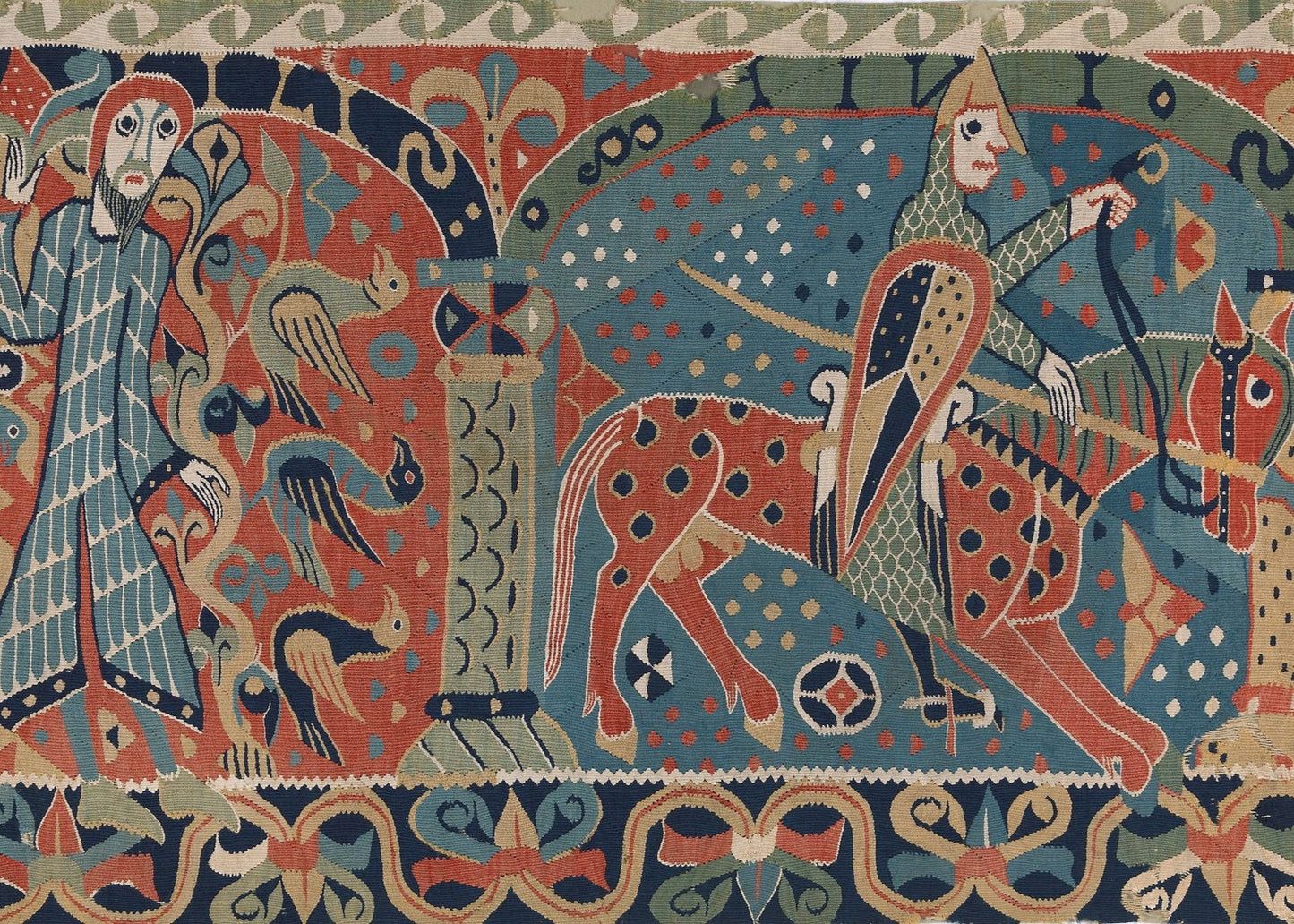Uidentifisert
Baldish carpet
Baldish carpet
Couldn't load pickup availability
About the original:
The Baldish tapestry is one of the very few tapestries in tapestry technique that have been preserved in Europe from before 1200, and the only one of its kind in the Nordic region. It is a gem, not only in Norwegian, but also in an international context. The carpet was found in Baldishol church, a wooden church from 1613 on Nes in present-day Ringsaker municipality in Innlandet county. The church is best known for the Baldish tapestry, which was found by chance under the floor when the church was demolished in 1879.
A mysterious "rag"
After the church was demolished, parts of the interior were sold at auction. In the winter of 1886/87, Christiania woman Louise Kildal visited relatives at Hoel Gård on Nes. During her stay, she goes to the neighboring farm at Baldishol Gård to find out if there was anything that was not sold at the auction.
The "old rag" was brought down from the attic and Kildal heard the story of the discovery of the carpet under the floor of the church. She bought what would later be named the Baldisholteppet, and told vividly about when she found the carpet in an interview with Morgenbladet in 1907.
Romanesque features
With its few but powerful colours, rhythmic lines and simple design, the Baldish carpet shows clear Romanesque style features. The motif shows the months April and May, where April is depicted as a bearded man in a long robe next to a tree with birds, and May as a rider in armour. The figures are placed under each arch, where partially illegible month names are interwoven.
The wound edges at the ends indicate that the carpet has been longer, but we do not know whether it has consisted of several monthly pictures, and possibly how many. In any case, the carpet cannot have been woven as a continuous frieze with 12 monthly productions. It was not technically possible with the looms of the time.
Fairy tale decoration
Long, narrow wall textiles such as the Baldisholteppe were in use in Norway from the Saga era, and in some cases until the 17th century. The prerequisites for such textiles were houses without windows, where they could hang as a horizontal band around the walls.
The Baldishol tapestry is carbon dated* to between 1040 and 1190. The motif itself dates to 1180–1190. The palm-like tendrils at the bottom of the carpet, which first became common in the visual arts around 1150, indicate that the carpet was woven towards the end of the period. Objects with a similar motif and style can be found both in Norway and abroad. It can be woven by a craftsman, or in a monastery, in Norway or in a less central European workshop, for example in France or England.
In contrast to later tapestries which are made of the same type of yarn, the colors of the Baldisholteppet are incredibly well preserved.
* C 14
Carbon dating or the C-14 method is a method for absolute dating of organic material. The method is based on the fact that all living organisms contain a small concentration of the radioactive carbon isotope 14C.
Sources
Baldish carpet: digitaltmuseum.no
Sjøvold, AB (2000). Norwegian tapestry. Oslo: C. Huitfeldt publishing house AS.
Rogers, PW (2008). REPORT The Raw Materials of the Baldishol Hanging, Norway, On behalf of Angela Musil-Jantjes, National Museum, Oslo. Bootham Terrace, York, United Kingdom: The Anglo-Saxon Laboratory.
Dating: Between 1040 and 1190
Designation: Picture tapestry
Material and technique: Picture weaving in tapestry technique with wool yarn in the warp, wool yarn and some linen yarn in the weft
Technique: Image weaving in tapestry technique
Weaving Hand weaving Plant dyeing
Decorative technique: Picture weaving in tapestry technique
Hand weaving Chopping
Material: Sheep wool Linen
Dimensions: H 118 x W 203 cm
Width: 203 cm
Height: 118 cm
Subject: Textile Church
Classification:
286.3 - Weaving
286.6 - Dyeing and cloth printing
353 - Furnishing and interior decoration
531.25 - Picture tissue
532 - Visual arts
805 - Time calculation
Motif: Botanical Rider Spring
Style period: Romanesque style
Place of production: Norway
Acquisition: Purchased 1887
Inventory no.: OK-02862
Registration level: Single object
Owner and collection: Stiftelsen Kunstindustrimuseet, Designsamlingene
Photo: Larsen, Frode

See all works
-
Baldish carpet
Vendor:UidentifisertRegular price From 150,00 NOKRegular priceUnit price per



